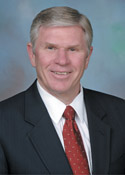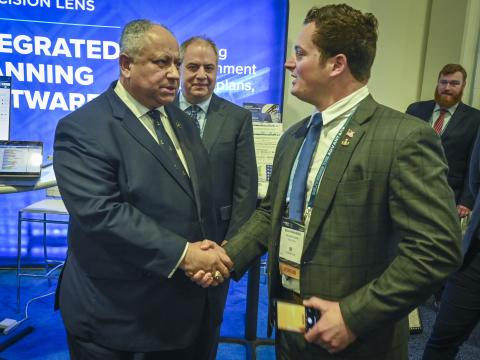Building Trust Is Essential for Effective Command and Control
 |
What quickly developed was a new command and control system that provided a common operational picture (COP) for the joint forces of USCENTCOM. The system supplied a common joint picture of the USCENTCOM battlespace throughout Southwest Asia and at the headquarters in
The GCCS became the first great automated means of command and control for joint forces. Later, when Gen. Hurd transferred to
Over the years, the military services and agencies added many applications to the GCCS suite of capabilities. In fact, any hardware or software change to the more than 100 GCCS applications and program interfaces demanded that the entire suite had to endure strict developmental testing within service components and DISA’s in-house test facilities. Then they underwent certification through exhaustive operational testing at service and combatant command locations and at DISA’s
The GCCS has served joint warfighters around the globe very well over the years. It is a trusted command and control system. I witnessed that trust factor to the utmost when I served as the DISA director during operations Enduring Freedom and Iraqi Freedom.
On September 11, 2001, the
As the Global War on Terrorism unfolded, the GCCS grew with new, upgraded capabilities. From September 2001 until August 2005, Dawn C. Meyerriecks, the DISA chief technology officer, along with the GCCS program management team, directed GCCS upgraded software testing and fielding throughout the GCCS community—with thousands of registered users worldwide—more than 40 times. It seemed that each weekend DISA was carefully orchestrating and upgrading three or more combatant commands across the globe with enhanced capabilities.
At weekly meetings with Gen. Richard B. Myers, USAF, chairman of the Joint Chiefs of Staff, I briefed him and the Joint Staff on where we would provide upgrades over the next week. At first, those attending asked if I was absolutely sure that these software changes would not cause any problems anywhere within the GCCS, our vital command and control system. The professionals at DISA executed those 40-plus upgrades without incident.
This was an amazing feat. I remember the days when a “communicator” was never trusted to touch a command and control system while it was being used in warfare. Back then, any change would just have to wait. But with those GCCS changes, we were able to add high-value features such as Predator video and integrated intelligence to the GCCS suite. These software changes were not small in scale, and this only added to the credibility and importance of what the DISA professionals achieved for the GCCS and our nation’s warfighters in a time of great need.
Today, a global GCCS COP capability maintains a common picture across the globe and represents one of the largest synchronized and distributed information technology data capabilities in existence.
Now, Assistant Secretary of Defense John Grimes, along with Dave Bennett and Hank Beebe at DISA, are embarking on a new program called Network Enabled Command and Control (NECC) to replace the GCCS. NECC will provide Web-based command and control throughout the Defense Department, and it will require our best government and industry minds to develop and implement this critical replacement. What is equally important is that the trust achieved by the GCCS professionals be held intact throughout the department as NECC moves into the primary position for supporting our nation’s men and women in uniform. In the end, command and control always boils down to the trust factor.
Lt. Gen. Harry D. Raduege Jr., USAF (Ret.), is chairman of the



